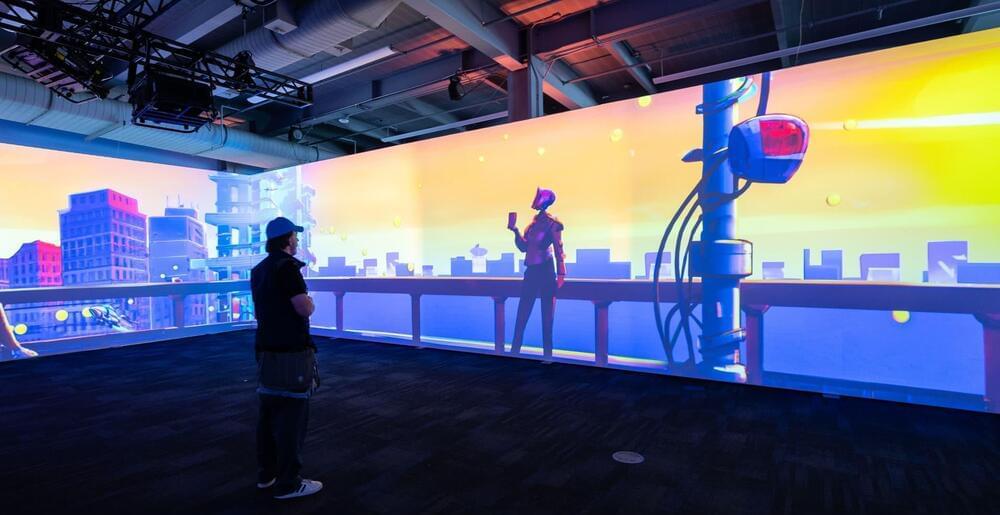NASA is building spacecraft parts that look alien. In a way, they are because it is a generative manufacturing AI that is the designer.



Im still w/ Kurzweil at 2029, but:
+1. While I will also respect the request to not state them in the comments, I would bet that you could sample 10 ICML/NeurIPS/ICLR/AISTATS authors and learn about 10 well-defined, not entirely overlapping obstacles of this sort.
We don’t have any obstacle left in mind that we don’t expect to get overcome in more than 6 months after efforts are invested to take it down.
I don’t want people to skim this post and get the impression that this is a common view in ML.
Astronomers picked up extraterrestrial signals which they previously missed in an area they thought was devoid of potential ET activity. It could be the first hint that humans are not alone in the universe.
Mysterious Signals Detected
Experts led by University of Toronto student Peter Ma used an algorithm with artificial intelligence (AI) to examine 820 stars in an area they didn’t suspect would have any potential activity. They were surprised with their finding, especially since they missed the tentative signals earlier due to a lot of interference, Daily Mail reported.

The World Wide Web was originally conceived and developed at CERN to meet the demand for automated information-sharing between scientists in universities and institutes around the world. From software development, to data processing and storage, networks, support for the LHC and non-LHC experimental programme, automation and controls, as well as services for the accelerator complex and for the whole laboratory and its users, is at the heart of CERN’s infrastructure.
The Worldwide LHC Grid (WLCG) – a distributed infrastructure arranged in tiers – gives a community of thousands of physicists near real-time access to LHC data. The CERN data centre is at the heart of WLCG, the first point of contact between experimental data from the LHC and the grid. Through CERN openlab, a unique public-private partnership, CERN collaborates with leading ICT companies and other research organisations to accelerate the development of cutting-edge ICT solutions for the research community. CERN has also established a medium-and long-term roadmap and research programme in collaboration with the high energy physics and quantum-technology research communities via the CERN Quantum Technology Initiative (QTI).
This video will aim to provide detailed information regarding the use of robots in healthcare, specifically the surgical robots. The video consists of 4 subtopics: history of surgical procedure, introduction to surgical robots, the da Vinci surgical system with Dr. Yasufuku’s interview and robotics in remote healthcare and future advancement. The full-length of the interview will be posted on the Demystifying Medicine Soundcloud account and as a YouTube Podcast. For more information regarding the Da Vinci Surgical System, please visit https://www.davincisurgery.com/about-us/privacy-policy. (The animation of Da Vinci Surgical System during the News section was used with permission from Intuitive.)
Finally, we would like to thank Dr. Kazuhiro Yasufuku for his time and contribution to our video through his excellent interview. For those who are interested to learn more about his research, please visit https://www.yasufukuresearch.com/.
The video was made by McMaster students Allan Li, Gurkaran Chhaggar, Mateo Newbery Orrantia, and Nadia Mohammed in collaboration with Dr. Yasufuku and the McMaster Demystifying Medicine Program.
Copyright McMaster University 2021
References:
Astra Laparoscopic & Robotic Centre for Women and Fertility. (n.d.). Robotic surgery.

A new method learns prompts from an image, which then can be used to reproduce similar concepts in Stable Diffusion.
Whether DALL-E 2, Midjourney or Stable Diffusion: All current generative image models are controlled by text input, so-called prompts. Since the outcome of generative AI models depends heavily on the formulation of these prompts, “prompt engineering” has become a discipline in its own right in the AI community. The goal of prompt engineering is to find prompts that produce repeatable results, that can be mixed with other prompts, and that ideally work for other models as well.
In addition to such text prompts, the AI models can also be controlled by so-called “soft prompts”. These are text embeddings automatically derived from the network, i.e. numerical values that do not directly correspond to human terms. Because soft prompts are derived directly from the network, they produce very precise results for certain synthesis tasks, but cannot be applied to other models.

Since its launch in November by San Francisco-based OpenAI, ChatGPT has taken the world by storm. The conversational chatbot can code, write essays, and even function as a search engine, among other tasks.
But this isn’t some futuristic vision of what ChatGPT will do. The business world has already bought in when it comes to AI in general, and ChatGPT in particular.
“It can create anything that we thought thus far was unique to human intelligence or creativity, whether that is interacting with us in a chatbot form, whether that is generating new content, whether it’s images, video,” Nina Schick, adviser, speaker, and A.I. thought leader, recently told Yahoo Finance.


Summary: Researchers are turning to artificial intelligence to find novel drugs that can block kappa opioid receptors with the hope to alleviate opioid addiction.
Source: Biophysical Society.
Approximately three million Americans suffer from opioid use disorder, and every year more than 80,000 Americans die from overdoses.

Generative AI is a catch-all term describing programs that use artificial intelligence to create new material from complex queries, such as “write a poem about monkeys in the style of Robert Frost” or “make an image of pandas draped over living room furniture.”
While AI more generally refers to software programs that can make themselves better by “learning” from new data, and which have been used behind the scenes in all kinds of software for years, generative AI is a fresh consumer-facing spin on the concept.
About 1,000 people from all over the world, including AI researchers and content marketers, attended Tuesday’s Gen AI Conference, which was organized by startup Jasper. It was a lavish affair, held at Pier 27 on the Embarcadero, overlooking San Francisco Bay.